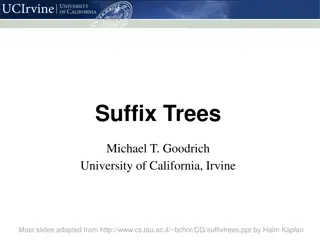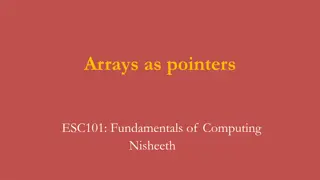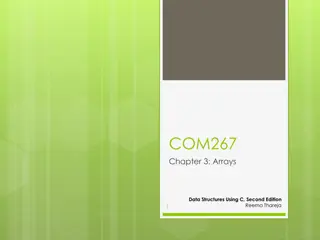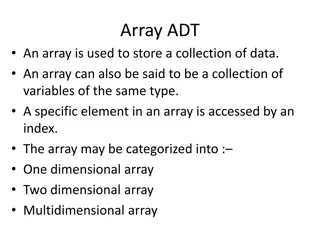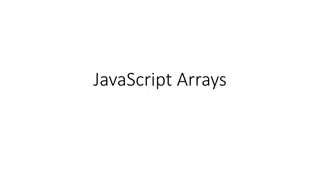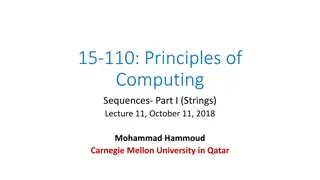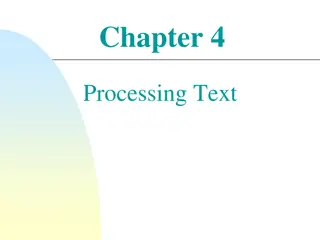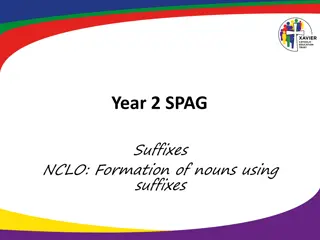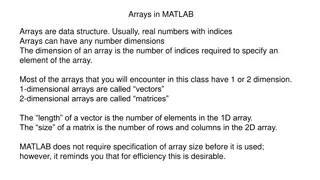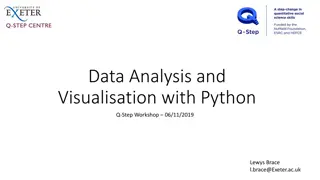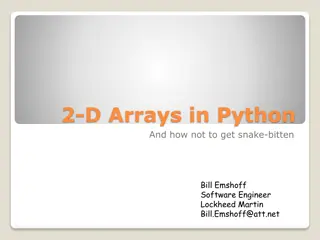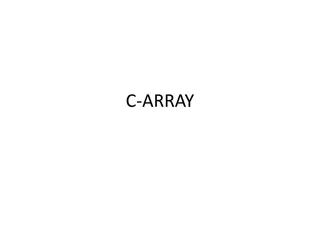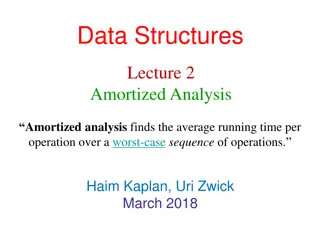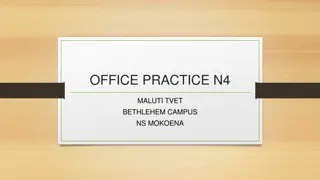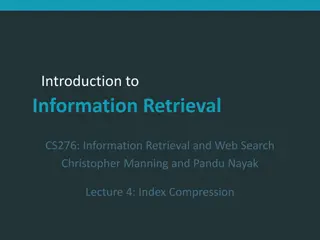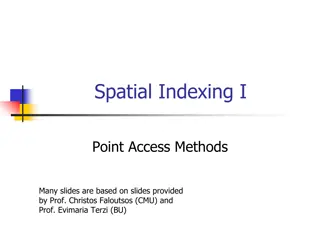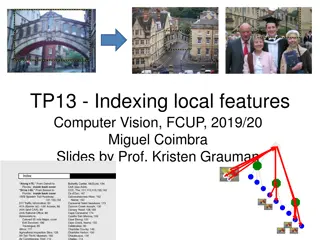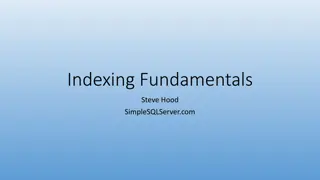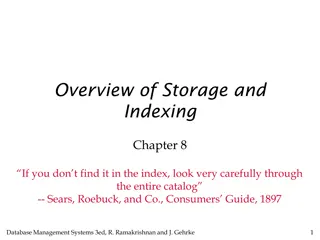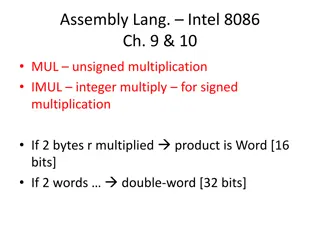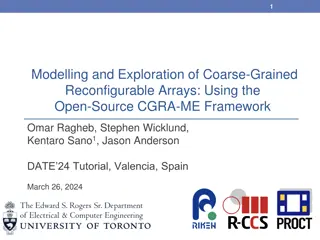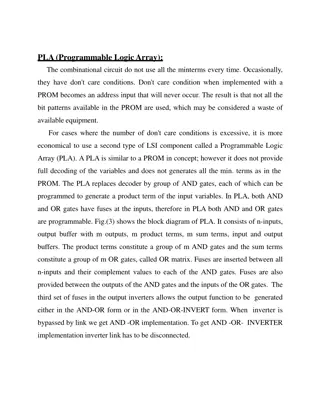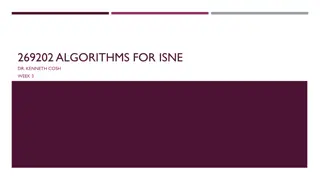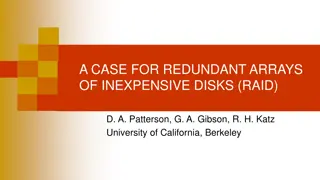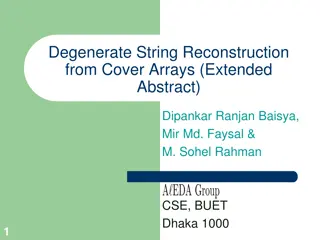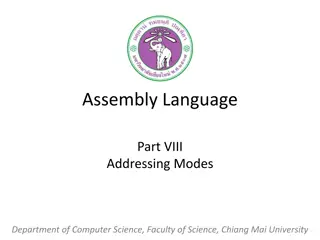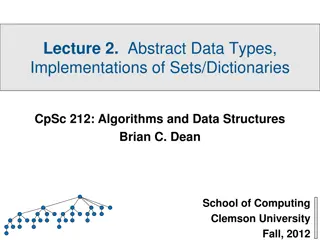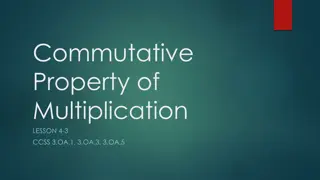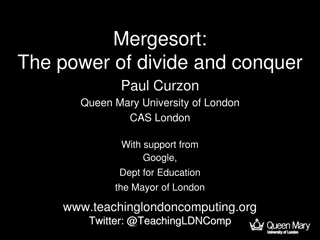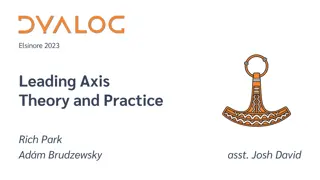Advances in Full-Text Indexing Using Suffix Arrays
Explore the evolution of full-text indexing techniques leveraging suffix arrays, from SA-hash to FBCSA, with insights on experimental results, suffix trees, and compressed indexes like CSA and FM-index. Discover efficient search strategies and data structures for pattern matching in text processing.
Download Presentation

Please find below an Image/Link to download the presentation.
The content on the website is provided AS IS for your information and personal use only. It may not be sold, licensed, or shared on other websites without obtaining consent from the author. Download presentation by click this link. If you encounter any issues during the download, it is possible that the publisher has removed the file from their server.
E N D
Presentation Transcript
Szymon Grabowski, Marcin Raniszewski Institute of Applied Computer Science, Lodz University of Technology, Poland The Prague Stringology Conference, 1-3 September 2014
Introduction Related work SA-hash FBCSA Experimental results Conclusions / Future work 1. 2. 3. 4. 5. 6. Two simple full-text indexes based on the suffix array 2 PSC 2014
T (text): P (pattern): are In this book, the first of several which I am writing, I must confine myself to a chronicle of those events which I myself observed and experienced, and those supported by reliable evidence; preceded by two chapters briefly outlining the background and causes of the November Revolution. I am aware that these two chapters make difficult reading, but they are essential to an understanding of what follows. follows. In this book, the first of several which I am writing, I must confine myself to a chronicle of those events which I myself observed and experienced, and those supported by reliable evidence; preceded by two chapters briefly outlining the background and causes of the November Revolution. I am aware that these two chapters make difficult reading, but they are essential to an understanding of what Operations: count: 2 [291, 351] find all j that: P = T[j .. j + len(P)] locate: allow searches for any substring Two simple full-text indexes based on the suffix array 3 PSC 2014
n = len(T), m = len(P) Suffix array [Manber & Myers, 1990]: array of n pointers to text suffixes arranged in the lexicographic order Typically needs 5n bytes (n log n (structure) + n log | | (text)) The pattern is searched using binary search (search time is O(m log n) in the worst case) Two simple full-text indexes based on the suffix array 4 PSC 2014
Suffix tree: can be built in a linear time efficient for small alphabet (widely use in bioinformatics) not-efficient for large alphabet large space requirements (most implementations need 20n bytes or even more!) Two simple full-text indexes based on the suffix array 5 PSC 2014
Since around 2000 great interest in succinct text indexes: compressed suffix array (CSA), FM-index Compressed indexes: not much slower than SA in count queries from 2 to 3 orders of magnitude slower in locate queries (large number of matches) Exploited repetitions in the SA [M kinen, 2003], [Gonz lez et al., 2014] Semi-external data structures [Gog & Moffat, 2013] Two simple full-text indexes based on the suffix array 6 PSC 2014
Manber and Myers presented a nice trick saving several first steps in the binary search: if we know the SA interval for all the possible first k symbols of pattern, we can immediately start the binary search in a corresponding interval Our proposal is to apply hashing on relatively long strings with extra trick to reduce the number of unnecessary references to the text Two simple full-text indexes based on the suffix array 7 PSC 2014
The hash function is calculated for the distinct k- symbol (k 2) prefixes of suffixes from the suffix array The value written to hash table (HT) is a pair: the position in the SA of the first and last suffixes with the given prefix Linear probing is used as the collision resolution method Two simple full-text indexes based on the suffix array 8 PSC 2014
unsigned long sdbm(unsigned char* str) { unsigned long hash = 0; int c; while (c = *str++) hash = c + (hash << 6) + (hash << 16) - hash; return hash; } http://www.cse.yorku.ca/~oz/hash.html Two simple full-text indexes based on the suffix array 9 PSC 2014
Two simple full-text indexes based on the suffix array 10 PSC 2014
Avariant of Mkinen's compact suffix array (finding repeating suffix areas of fixed size, e.g., 32 bytes) Maintain a int32-aligned data layout, beneficial for speed and simplicity Result: two arrays arr1 and arr2: arr1 stores bits and references to areas in arr2 arr2 stores SA and text indexes (32-bit integers) We used: SA, SA-1 and TBWT: SA-1[j] = i SA[i] = j TBWT [i] = T[SA[i] 1] Two simple full-text indexes based on the suffix array 11 PSC 2014
There are two construction-time parameters: block size bs sampling step ss The parameter bs tells how many successive SA indexes are encoded together and is assumed to be a multiple of 32 The parameter ss means that every ss-th text index will be represented verbatim Two simple full-text indexes based on the suffix array 12 PSC 2014
SA[400..407] = [1000, 522, 801, 303, 906, 477, 52, 610] bs = 8 = {a, b, c, d, e} TBWT[400..407] = [a, b, a, c, d, d, b, b] text indexes: [999, 521, 800, 302, 905, 476, 51, 609] we choose 3 most common symbols: b, a, d we conclude that SA has areas of values: [521, 51, 609] [999, 800] [905, 476] SA-1[521] = 506 SA[506..508] = [521, 51, 609] SA-1[999] = 287 SA[287..288] = [999, 800] SA-1[905] = 845 SA[845..846] = [905, 476] Two simple full-text indexes based on the suffix array 13 PSC 2014
SA[400..407] = [1000, 522, 801, 303, 906, 477, 52, 610] SA[400..407] = [1000, 522, 801, 303, 906, 477, 52, 610] SA[400..407] = [1000, 522, 801, 303, 906, 477, 52, 610] ss = 5 TBWT[400..407] = [a, b, a, c, d, d, b, b] most common symbols: b, a, d We code: SA[506..508] = [521, 51, 609] SA[287..288] = [999, 800] SA[845..846] = [905, 476] c 11 a 01 d 10 b 00 arr1.appendBits([01, 00, 01,11,10, 10, 00, 00]) arr1.appendBits([1, 0, 0, 1, 0, 0, 0, 1]) arr1.appendInts([start_key_arr2]) arr2.appendInts([506, 287, 845]) arr2.appendInts([1000, 303, 610]) Two simple full-text indexes based on the suffix array 14 PSC 2014
Recursive calls until verbatim written text index is found Maximum number of recursions cannot exceed ss parameter ss parameter is a time-space tradeoff: using larger ss reduces the overall space but decoding a particular SA index typically involves more recursive invocations Two simple full-text indexes based on the suffix array 15 PSC 2014
All experiments were run on a laptop computer with an Intel i3 2.1 GHz CPU, equipped with 8GB of DDR3 RAM and running Windows 7 Home Premium SP1 64- bit All codes were written in C++ and compiled with Microsoft Visual Studio 2010 We used A_strcmp function from asmlib library v. 2.34 written by Agner Fog (http://www.agner.org/optimize/asmlib.zip) Two simple full-text indexes based on the suffix array 16 PSC 2014
The test datasets were taken from the Pizza & Chili site We used the 200-megabyte versions of the files: dna english proteins sources xml In order to test the search algorithms, we generated 500K patterns for each used pattern length Each pattern returns at least one match Two simple full-text indexes based on the suffix array 17 PSC 2014
Two simple full-text indexes based on the suffix array 18 PSC 2014
Two simple full-text indexes based on the suffix array 19 PSC 2014
SA-hash: fastest index requires significantly more space than SA minimal pattern length SA-allHT (not implemented): additional hash table for each pattern length from 1 to k (price: even more space use) Two simple full-text indexes based on the suffix array 20 PSC 2014
Two simple full-text indexes based on the suffix array 21 PSC 2014
Two simple full-text indexes based on the suffix array 22 PSC 2014
Two simple full-text indexes based on the suffix array 23 PSC 2014
Two simple full-text indexes based on the suffix array 24 PSC 2014
Two simple full-text indexes based on the suffix array 25 PSC 2014
We proposed two suffix array based full-text indexes with interesting space-time tradeoffs SA-hash augments the standard SA with a hash table, to speed up searches by factor about 2.5 3, with 0.3n 2.0n bytes of extra space Fixed Block based Compact SA (FBCSA) is related to M kinen's CSA, but uses an int32-aligned data layout Two simple full-text indexes based on the suffix array 26 PSC 2014
SA-hash: replace sdbm hash function with a more sophisticated one (xxhash?) with fewer collisions. Or try perfect or cuckoo hashing SA-hash: variable-length prefixes as hash keys? FBCSA: some design decisions were rather ad hoc and should be tested in more systematic ways, with hopefully new relevant space-time tradeoffs Two simple full-text indexes based on the suffix array 27 PSC 2014
Two simple full-text indexes based on the suffix array 28 PSC 2014



